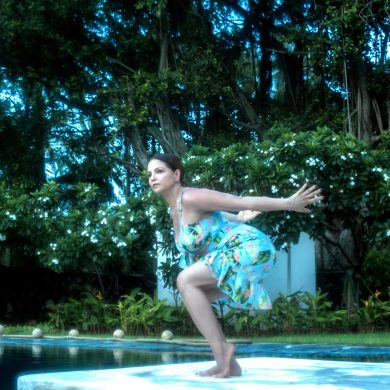In our day to day journey of life, we come across many situations where we do things we don’t want to and feel miserable later. The best part is that we know we could’ve handled the situation better, but somehow stopped short of doing it.
The problem is, most of us behave passively or aggressively in a difficult situation. In neither instance are we communicating clearly. Being passive shows we are not clear about what we really want. In being aggressive we tend to over-react and probably make things worse.
The middle path
Being assertive is what might be called the ‘middle path’. By following this path, we not only manage our anxiety and fears in difficult situations and gain self-confidence, but also learn how to say ‘No’. Being assertive is not about getting things done our own way all the time, but is about expressing ourselves clearly so that others know what we feel and what we want.
Most of us fail to be assertive because we do not acknowledge our rights:
- The right to be treated with respect as an intelligent, capable and equal human being
- The right to change our mind
- The right to ask for what we want
- The right to express our opinion and values
- The right to express our feelings
- The right to make mistakes
In order to be assertive, we must first learn to be specific, which is, to say exactly what we want and what we feel. It is silly to expect people to read our minds. Why create confusion in the other person and resentment in our own selves?
The next is to stick to the point and not be deflected by the other person refusing or ignoring our request. People often argue through manipulation, wanting to distract us. We must learn not to lose focus and stay with what we want.
Most of us beat around the bush rather than say ‘No’. The common reason being, we don’t want to hurt anyone. We want to be liked. We feel it is rude and selfish, even aggressive, to say ‘No’. Yet, it is far from the truth. Actually, it is kinder to be straightforward about refusing, than to say ‘Yes’ and let the other person down later.
There is no need to make excuses while saying ‘No’. The polite way is to say: I am sorry, but I won’t be able to do this… Or else, if we think we need time before accepting or refusing, we should ask for it.
Expressing feelings, especially strong emotions like anger or hurt, is crucial to being assertive. Most of us are afraid of these strong feelings. We are afraid that if we show this ‘ugly’ side of ourselves, people will stop liking us. So we suppress our emotions, turning them inwards and often becoming depressed because of this.
The suppressed emotions also get transformed into physical ailments such as headache or irritable bowel or even rashes. Studies have shown that holding negative feelings within us, and suppressing them, is the root cause of most of the lifestyle diseases like diabetes, hypertension, heart disease, even cancer.
Expressing our feelings is one of the most difficult tasks to learn, so we need to do it slowly. We should refrain from tackling difficult situations till we have learnt to tackle smaller things. Practicing at home with family, especially with siblings, or with friends would be a good start.
In order to stand up for ourselves, we need to work out exactly what we want to say. Rehearse saying it. If in doubt, write it down. We should not allow the issue to be confused – sticking to the point. We should say what we really want and not what we think others want to hear. We should not be afraid to say ‘No’. We need to remember at all times that it is our right to stand up for what we want and not let anyone tell us otherwise – this is the most empowering thought here.
Learning to be assertive is not just a matter of dealing with people. It is truly a way of improving our mental and emotional health, by building up our self-confidence and self-esteem. And it reflects in our improved relationships at home and at work.
When we learn to say ‘No’, we realize how much in control we are of our lives. Now, isn’t that the goal of every person in the world!
Sunita Pant Bansal hails from the Kumaon hills of the Himalayas, a region well-known for its crop of litterateurs. Her forte is decoding Hindu scriptures to show their relevance and application in today’s times. In her four decades of writing career, Sunita has authored hundreds of books for children and young adults on folk literature and mythology. For adults, her genres cover body, mind and soul.







